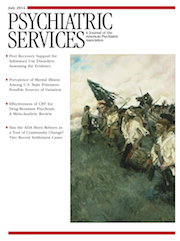Employment Barriers, Skills, and Aspirations Among Unemployed Job Seekers With and Without Social Anxiety Disorder
Abstract
Objective
The literature has consistently demonstrated that social anxiety disorder has substantial negative impacts on occupational functioning. However, to date, no empirical work has focused on understanding the specific nature of vocational problems among persons with social anxiety disorder. This study examined the association between perceived barriers to employment, employment skills, and job aspirations and social anxiety among adults seeking vocational rehabilitation services.
Methods
Data from intake assessments (June 2010–December 2011) of 265 low-income, unemployed adults who initiated vocational rehabilitation services in urban Michigan were examined to assess perceived barriers to employment, employment skills, job aspirations, and demographic characteristics among participants who did or did not screen positive for social anxiety disorder. Bivariate and multiple logistic regression analyses were performed.
Results
After adjustment for other factors, the multiple logistic regression analysis revealed that perceiving more employment barriers involving experience and skills, reporting fewer skills related to occupations requiring social skills, and having less education were significantly associated with social anxiety disorder. Participants who screened positive for social anxiety disorder were significantly less likely to aspire to social jobs.
Conclusions
Employment-related characteristics that were likely to have an impact on occupational functioning were significantly different between persons with and without social anxiety problems. Identifying these differences in employment barriers, skills, and job aspirations revealed important information for designing psychosocial interventions for treatment of social anxiety disorder. The findings underscored the need for vocational services professionals to assess and address social anxiety among their clients.



